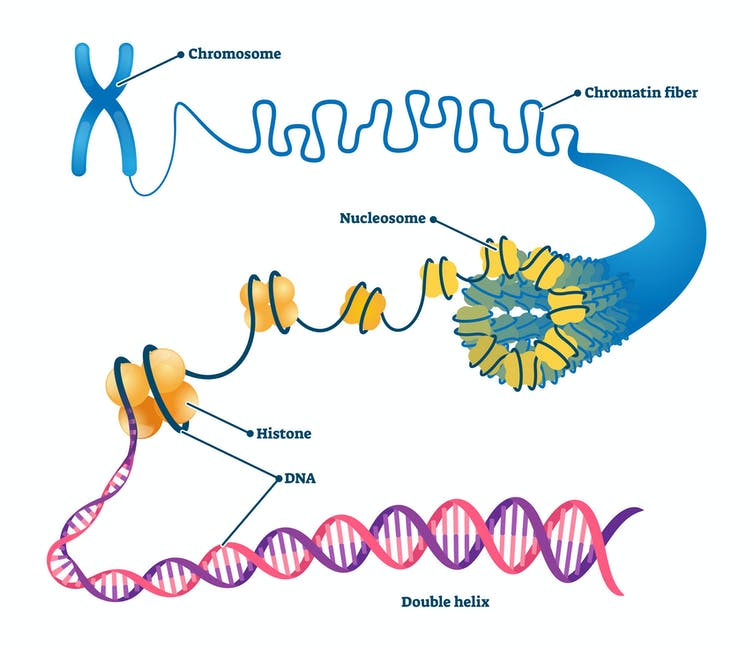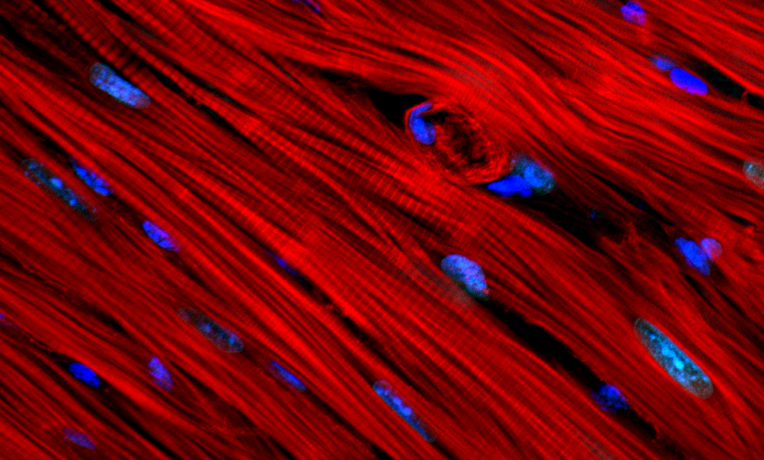Sometimes cells can forget what type of cell they are and stop functioning correctly. This commonly happens in cancer, in which mature cells lose aspects of their identity and become more susceptible to begin dividing uncontrollably.
Heart conditions like cardiomyopathy, a disease that makes it harder to pump blood, affect the shape and function of affected heart cells. These changes can also occur in the nucleus of the cell, which houses genetic material that tells a cell how to function.
Because certain changes to nuclear structure can be early warning signals for heart problems, monitoring for such changes could help clinicians diagnose and treat disease before it gets worse. Researchers know that certain changes in the physical forces exerted on heart cells, including from their own contraction, can lead the cells to lose their heart cell identity and function poorly. But exactly how these physical forces work to change heart cell identity was unclear.
In a new study my colleagues and I published in the journal Nature Biomedical Engineering, we found that mechanical forces can reorganize the genetic material inside the nucleus of heart cells and affect how they develop and function. Better understanding of how cells claim and maintain their identities may help advance treatments to repair heart damage from cardiovascular disease and create new prosthetic tissues.
Heart cells in a petri dish change the structure of their nuclei with each beat.
Pushing cell development in another direction
Early in human development, the external pressures surrounding immature cells influence what type of cell they eventually become when they differentiate, or fully mature. These external forces also help maintain tissue health as people age.
During differentiation, cells move around and restructure a mixture of proteins and DNA called chromatin that’s located in their nuclei. Cells use chromatin as a way to package and organize their genetic code. Knowing that external physical pressures can affect how cells mature, my research lab and I wanted to explore how mechanical forces can reorganize chromatin and what that might tell us about how heart cells develop and sometimes stop working.

Chromatin consists of DNA tightly coiled around proteins called histones.
VectorMine/iStock via Getty Images Plus
To do this, we looked at adult heart cells as they contracted under a microscope to see how their nuclei change shape. We then compared these images with the nuclei of embryonic heart cells as they normally change during early development. We found that areas in the nucleus with high tension tended to organize chromatin into specific shapes known to influence cell behavior. When we changed the tension in those areas of the nucleus, we were able to prevent cells from developing into normal heart cells. This meant that tension may play a key…
